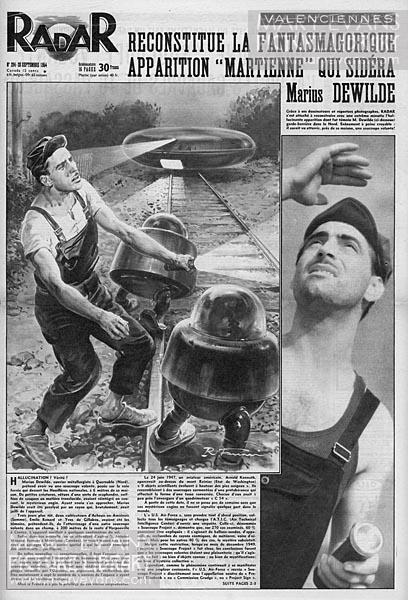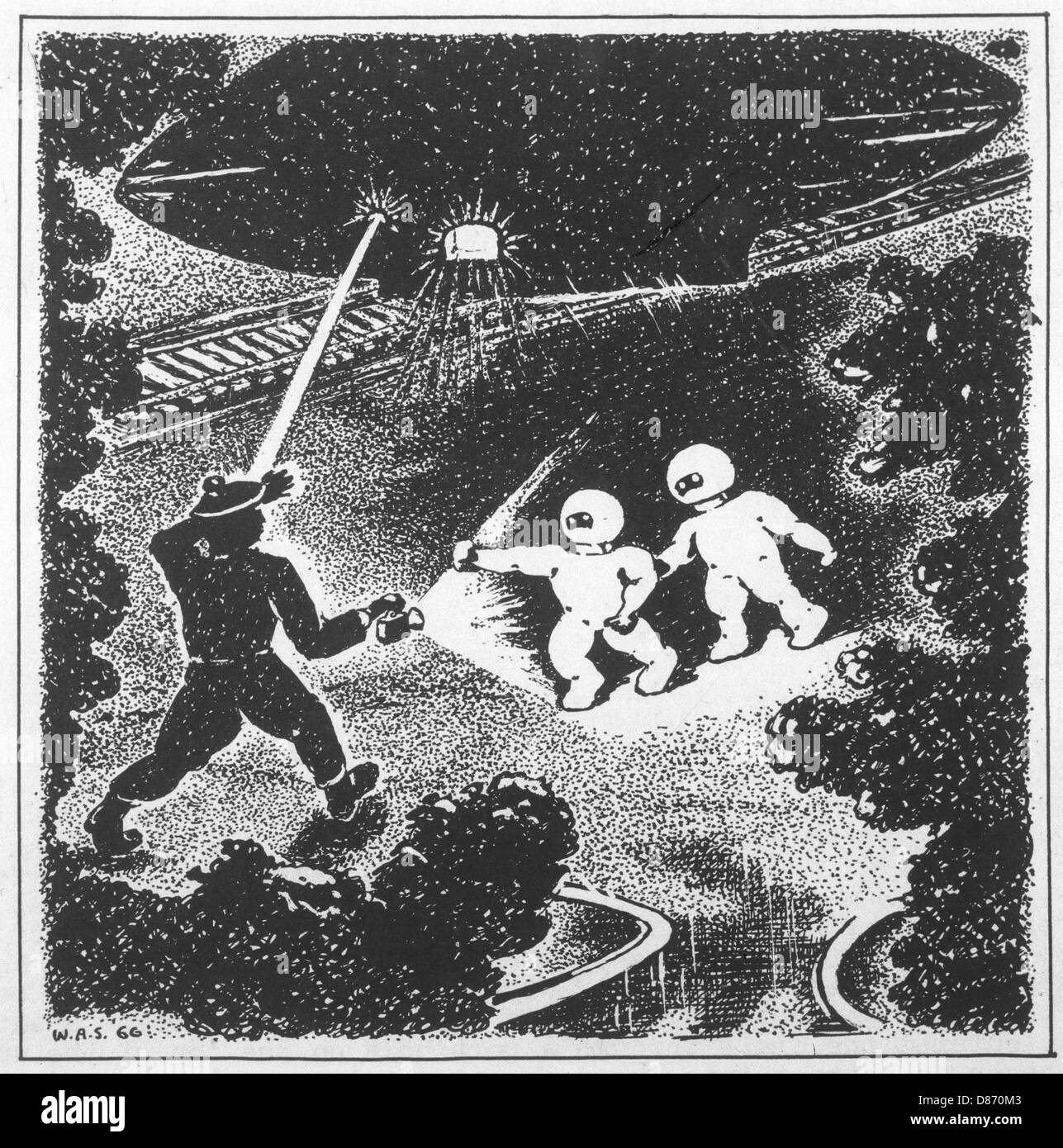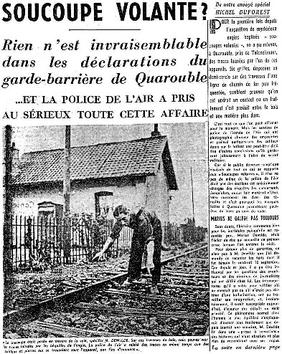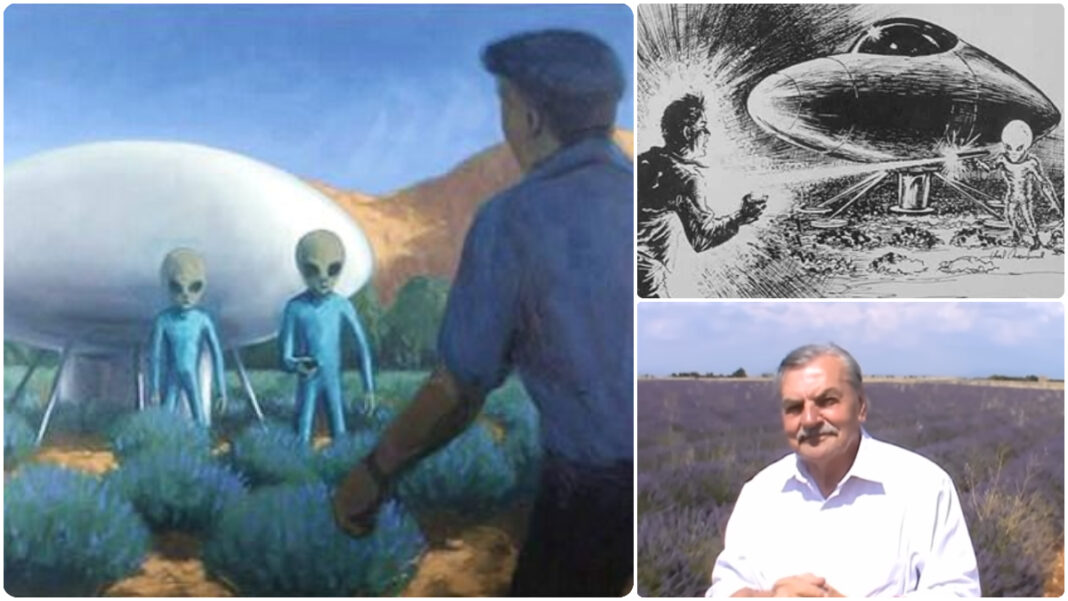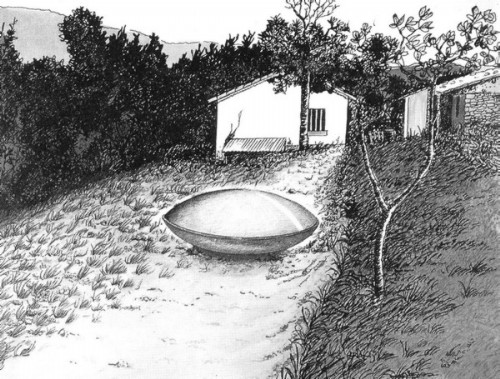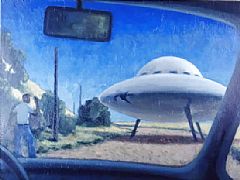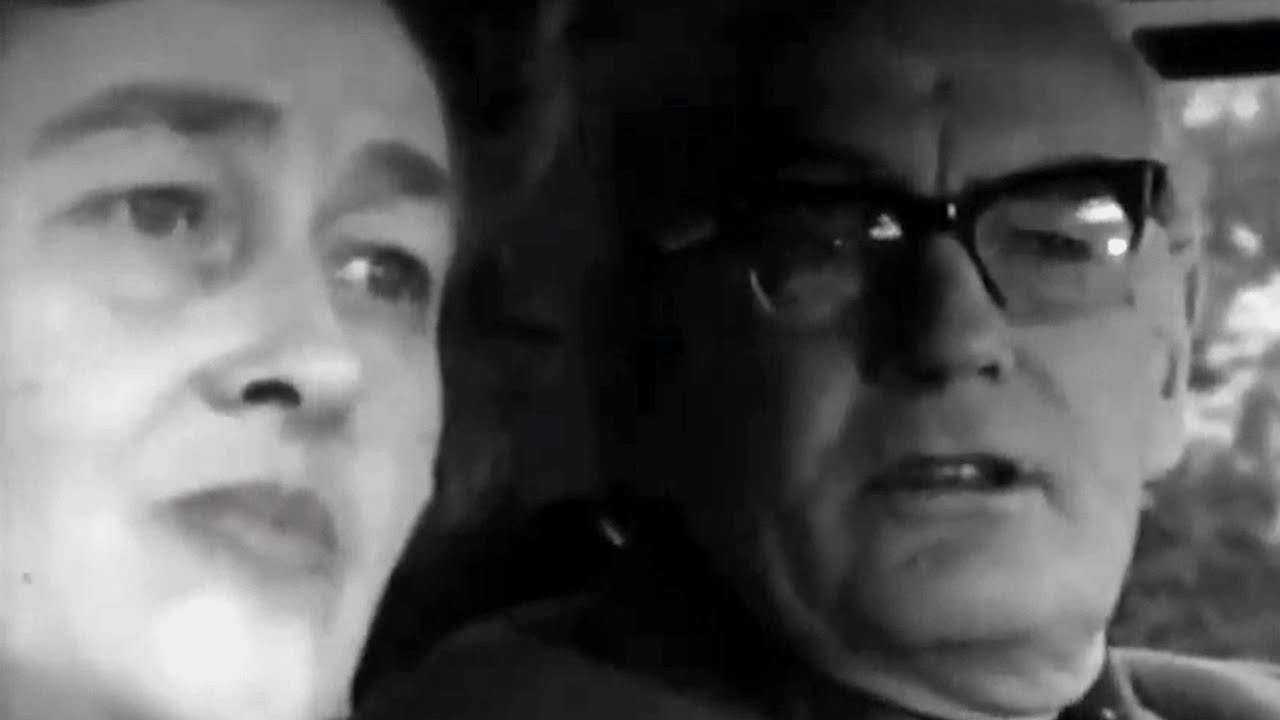On 10 September 1954, a young metalworker named Marius Dewilde (1921–1996) stepped outside the abandoned railway station house he occupied in Quarouble, France, and encountered an alien world.
Even for a man who would later claim to have worked as a traveling circus performer, fought in the resistance, and voyaged around the world in the French merchant marine before his thirty-third birthday, what happened that September night was truly fantastic.
Dewilde, who was initially responding to his dog’s furious barking, grabbed his flashlight and headed outside to make sure nothing untoward was afoot. What would prove to be a life-changing experience occurred moments later, when he saw posed on the railroad tracks in front of him a shadowy vessel he first took to be a carelessly placed farmer’s cart, a common occurrence in the area.
As he moved to investigate, Dewilde observed two small figures skulking in the shadows. Concluding they were smugglers returning to their contraband — also a frequent sight along the chemin de contrebandiers that passed nearby — he decided to intervene and capture one of them.1 Before he could act, however, a beam of light projected from the vehicle paralyzed him, leaving his senses free to process what was happening even as his body refused to respond. In that instant, Dewilde, an unwitting victim of an otherworldly civilization and their advanced technology, became one of the early focal points for observers — the convinced, the curious and the skeptical — interested in the UFO phenomenon in postwar France.
